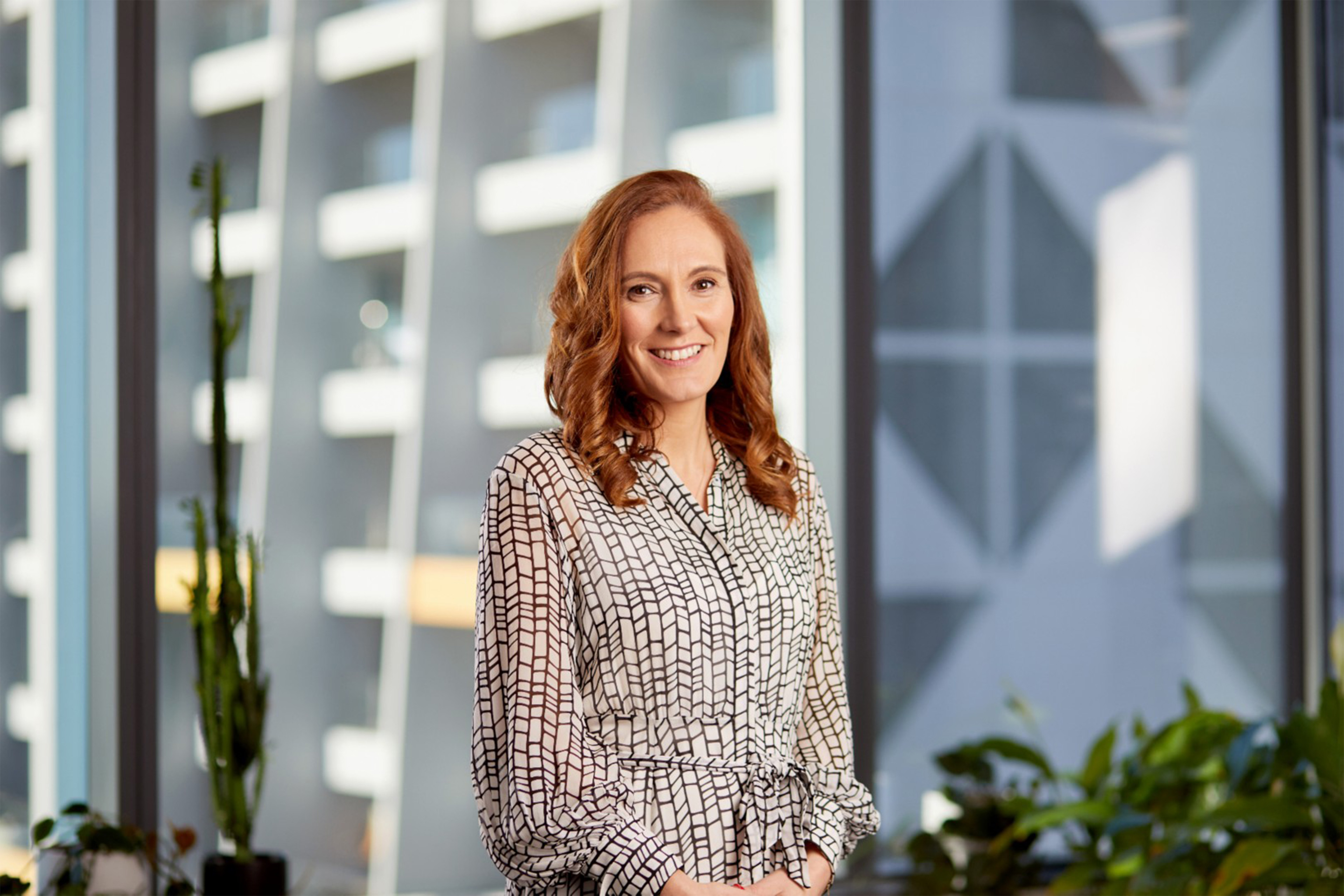EY refers to the global organization, and may refer to one or more, of the member firms of Ernst & Young Global Limited, each of which is a separate legal entity. Ernst & Young Global Limited, a UK company limited by guarantee, does not provide services to clients.

Digital workers demand flexibility, great offices, and top technology. Employers want transformation.
Work is going through a revolution, accelerated by the experience of lockdown during the pandemic.
Even a year on from the constraints being lifted, you’d be hard-pressed to find an office that doesn’t offer some form of remote or hybrid work for its staff. Zoom, Teams and a needs-must attitude unlocked many workplaces’ potential.
Employers may want staff back in the office, but employees may be reluctant to trade in the work-life balance they’ve found. For offices wanting to retain the best talent, creating an environment that is welcoming and equipped with the best tools is a top priority.
“Midway through the pandemic, I realized there was a ‘no going back’ sensibility, and that there was a great desire – as indeed there still is in the middle of 2023 – to go back,” says Julia Hobsbawm, author of The Nowhere Office, a book documenting the reinvention of the workplace post-2020.
“I think there’s a workplace revolution happening.”
She says before the pandemic arrived, workers were already suffering their own epidemic of stress, and Covid-19 merely “uncorked the bottle”.
In Australia, 41 percent of jobs are now done either fully or partially remotely. While there are advantages to being in the same room to collaborate and communicative effectively, Hobsbawm says it’s not the same for every profession.
“There are a million reasons to argue for people to be back together in an office: culture and productivity are amongst them. But the reality is, it's not a one size fits all model. It never has been. It's a fallacy to suggest it has to be done in an old, rigid, one-size-fits-all, commute-based eight-hour day. It's only 100 years since we had an eight-hour day, we used to have a 10-hour day.”
Architect Gwynn Hoskins has returned to New Zealand from Silicon Valley having created office space for some of the biggest technology companies when he worked for the once-skyrocketing office provider WeWork.
His company No More Boring aims to create world-class office spaces for Kiwis – like satellite navigation start-up Zenno Astronautics. The rooms are decorated with meteorites. Screens show a live feed from the International Space Station. Planters and furniture carry satellite imagery, and a hexagon shape which reflects a central part of Zenno technology.
Hoskins says it’s all part of trying to make the office connected to the mission people are working towards.
“What I'm seeing and talking to companies about is that it's not about making the employee come back, it's creating a space in which the employee wants to come back. And then there's a really big difference to that.
“It can't just be superficial. Creating that sense of belonging can't just be a bunch of kombucha or a bright yellow slide. It doesn't have to be a lot. It just has to be thoughtful,” he says.
EY partners Rohini Ram and Meredith Wilmot work in the People Advisory Services Practice, helping clients adapt to shifts in the workplace. A new report from EY, ‘Work Reimagined’, suggests both employers and staff believe office life has changed permanently.
“What we saw that there was a huge demand by employees or staff members saying ‘at home, I've got better internet, and I can go and do things at a faster rate that my employers are not giving me the opportunity to, because they don't have the right technology or digital platform for me to be more efficient and effective’,” Ram says.
The other side of the flexible working coin is that employers are investing in new technologies to track their employees’ location, partly to shield themselves from employment law, immigration or other potential liabilities.
“There has to be a high level of trust,” Ram says of flexible working arrangements.
The EY study showed freer working arrangements, where workers could fit in exercise or do shopping around their work life, were positive for productvitity. However, work life could also suffer if remote staff weren’t well-organised or in a structured work environment at home.
Wilmot says finding what works is often a negotiation on a case-by-case basis.
“Employees are definitely saying ‘this is what I would like because this is what I need to fit my lifestyle demands’. And the challenge is for the employer to say ‘this is what we need, this is what the role demands’.”
Employees will choose an organisation that will provide the flexibility they are looking for, says Ram. If flexibility isn’t offered, offices risk a poor reputation in the employment marketplace.
Microsoft is in the unique position of creating products that live at the centre of office life, and staffing its own offices all over the world to run its business.
Lee Hickin is the Chief Technology Officer at Microsoft Australia/New Zealand. Its flagship products Office, Excel, PowerPoint and Outlook have shaped workflow for decades, and Hickin says the pandemic was a “catalyst moment” for rethinking how Microsoft structured its own office life.
“That simple move towards a laptop so you can be portable was one thing,” he says.
“We found that the spaces we had built maybe didn’t meet the purposes of what the new world of working was going to be.
“People were moving in and out of the offices at times that suited them. They were using the offices for very distinct purposes: collaboration, social gathering, not so much necessarily a place to sit down for five or seven hours a day and then go home.”
Microsoft Teams is one of the new pieces of software that exploded due to the pandemic. Hickin explains that Teams was still in development when Covid-19 hit, but when Microsoft saw how vital the product would be for work life, they scrambled to get it done.
“We supported the growth we saw in that. And there’s no question about it: our world pivoted from being Teams as this thing we jump into every now and again to essentially moving our lives onto Teams.”
An early investor in OpenAI (the creator of ChatGPT), Microsoft is now expanding its capacity for AI technologies, including in its main software.
“We’re seeing a lot of the need for ‘hidden AI’ – the stuff we don’t always think about as AI,” he says, giving the example of virtual backgrounds on video meetings.
Microsoft is introducing Copilot, an artificial intelligence assistant feature embedded in its apps. For example, if you were coding in GitHub, you could ask Copilot questions about what you’re working on – or suggest information relevant to a client for a PowerPoint. It’s a feature Hickin has been using before it’s even been released to the public – a process developers call “eating your own dogfood”.
“I’m a huge AI optimist,” he says.
He likens AI potential to the intelligence of the synthesiser, the electronic musical instrument.
“If you gave those to someone with no skills, they're just going to create a bunch of noises. But if you put a synthesizer in the hands of a musician, you get this new thing, this thing that they were never able to do before.
“I think AI is a bit like that music – the synthesizer of the 80s. We've got this new tool and if we have skills, and we apply those skills to the AI, then anything's possible.”
Podcast
Episode 04
Duration
24m 29s
Our latest thinking
Will the future of talent be shaped by the flow of an untethered workforce?
Work is less connected to old ideas of career, rewards and workplaces. Explore the EY 2024 Work Reimagined Survey for keys to a Talent Advantage.
How governments can foster a digital-first culture in their workforce
A new breed of digital leaders can inspire change in public sector workplaces, prioritizing innovation and a rewarding employee experience. Learn more.





